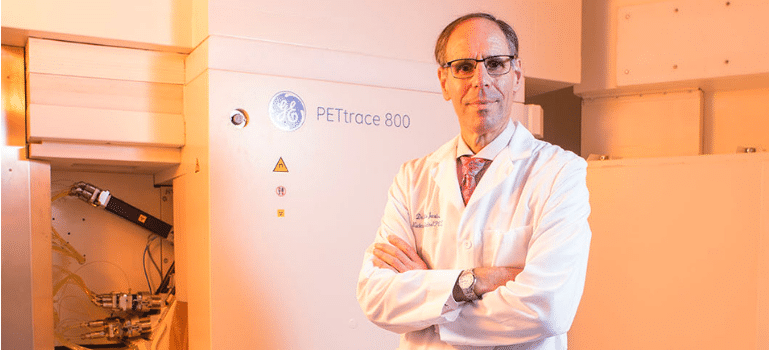Brain and Spine Care
Want to learn more about this at Kettering Health?
Finding out you have a brain tumor is scary, but an early diagnosis can be the key to successful treatment. A special PET scan (Positron Emission Tomography) can help detect brain tumors faster and more efficiently.
According to Martin Satter, PET molecular imaging research scientist for Kettering Health, Kettering Health is the only health system in the United States to use Carbon-11 (C-11) methionine for PET scans routinely for the diagnosis and treatment of brain tumors in adults.
What is C-11 methionine, and how is it used?
Methionine is required for normal growth and repair of body tissues. The body can’t produce this essential amino acid itself—instead, we get it through our diet.
As amino acids typically collect in brain tumors, accumulating methionine can be an early sign of a developing brain tumor.
To monitor that process, scientists make a radioactive version of methionine, inject it into the patient’s bloodstream, and then take a PET scan of the brain. The man-made C-11 methionine mixes with the naturally occurring methionine, and specialists can see any accumulation in the images.
C-11 cannot last long. Luckily, Kettering Health Main Campus is one of a select few places in the country where the tracer is produced. A machine called a cyclotron makes it possible. Highly specialized radiochemists add it to the natural methionine molecule to make the radioactive PET drug.
Kettering Health has been performing PET scans with C-11 methionine since 1995. With the recent installation of a more powerful cyclotron that produces the tracer in 2019, we can continue to offer this rare diagnostic tool.
Advantages to C-11 methionine PET scans
Using this unique scan, nuclear medicine physicians can see the extent of the tumor better and earlier than with an MRI or CT scan. PET scans allow physicians to see changes in the brain sooner, leading to an earlier and more accurate diagnosis.
“One of the great advantages of PET imaging is that it is based on looking at biochemical differences in the tumor or body tissue. A CT or MRI looks at anatomy and anatomical changes,” says Steve Matmuller, chief nuclear pharmacist at Kettering Health.
“With PET, we can see smaller changes before they manifest themselves in larger, more anatomical abnormalities that CT or MRI can pick up. That is part of the power of PET.”
The surgeon and radiation therapist then have an advantage, as they can then use precision tools of image-guided surgery and gamma knife to resect or irradiate the tumor.
Is a methionine PET Scan an option for me?
Whether or not you’re a candidate depends on the type of tumor—typically, this diagnostic scan is used to identify tumors originating in the brain. According to neurosurgeon Dr. Raymond Poelstra, it can identify parts of the tumor that may be more aggressive.
C-11 methionine PET scans are also used for presumed stroke patients whose diagnostic scans don’t improve with time. No improvement can suggest there is a tumor present in the brain.
“This can help us differentiate if it is a stroke or a tumor,” Dr. Poelstra says. “Sometimes, something is still showing on a repeat CT scan in people who are assumed to have had a stroke. If there is that suspicion that it is more than a stroke, you can use methionine and determine if it is a tumor.”
Following the PET Scan
“The body can’t tell any difference between our version and normal methionine,” Matmuller says.
After a patient has a C-11 methionine PET scan, Kettering Health’s performs a full-scale diagnostic review of their images. This board of multi-specialists meets weekly to discuss and determine the optimal treatment plans for all patients with brain tumors.










